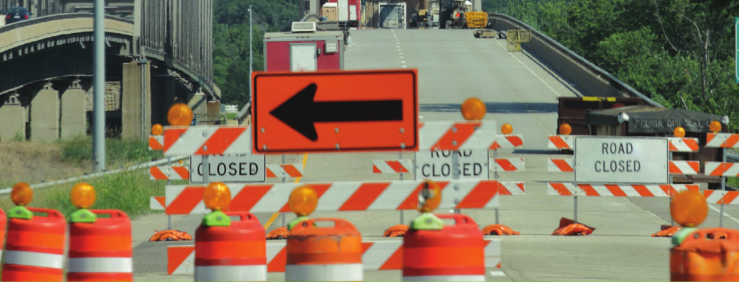Even a smaller federal package would spur construction immediately

If enacted in whole, President Biden’s nearly $2 trillion infrastructure and job growth initiative, the American Jobs Act, would have a profound impact on the economy and the construction sector in particular. The plan is expansive and its direct construction-related portion accounts for roughly half of the total.
The proposal sets aside $621 billion for transportation initiatives, including funding for roads, electric vehicle incentives and charging stations, public transit, airports and ports. For buildings and utilities, another $689 billion is dedicated to water infrastructure, broadband internet, electric grid improvements, public schools and veterans’ hospitals. Additional funds are also made available for workforce training, increased wages/benefits for home care workers, and new spending on research and development.
While comprehensive, the plan’s future course remains precarious.
The main difficulty lies with its passage through Congress, where it may prove difficult to pass another large spending bill on the heels of the $1.9 trillion Covid-19 relief bill (the American Rescue Act) signed into law in March. To pay for the elements of the American Jobs Act, the plan calls for raising corporate taxes — a large hurdle that could raise the ire of Republicans and moderate Democrats. Pushing through the legislation with Democrats alone brings its own complications (either using the budget reconciliation process that requires the bill is fully paid for, or eliminating the filibuster), and would still require unanimity among Senate Democrats.
At the same time, a great deal of bipartisan and bicameral support does exist for added spending on infrastructure projects.
In 2015, for example, President Obama and the Republican-controlled Congress agreed on the $305 billion FAST Act, and just before the 2020 presidential election, bipartisan committees in the House and Senate had agreed on its replacement.
To build this large effort into the forecast, and yet account for the looming uncertainty of what will eventually be passed, Dodge Data & Analytics has included a much more limited and targeted infrastructure package into the forecast set to be released at the end of April — roughly $550 billion for core infrastructure construction, or half the size of the current core infrastructure proposal.
This infrastructure spending is assumed to be in addition to a $300 billion replacement for the FAST Act, which has already been built into the Dodge construction starts forecast.
Even this lower dollar figure would have an immediate and positive impact on the forecast for construction starts. Under this assumption, our proprietary econometric model suggests that public works starts would increase by nearly 50% from 2021 through the end of our forecast window in 2025, up from a 17% growth rate in the previous version of the forecast released in January. This growth is equally shared across the public works sectors. Nonresidential buildings would also see some support through additional funds for education, healthcare and federal buildings, but the impact is more muted.
Richard Branch is chief economist of Hamilton, N.J.-based Dodge Data & Analytics.